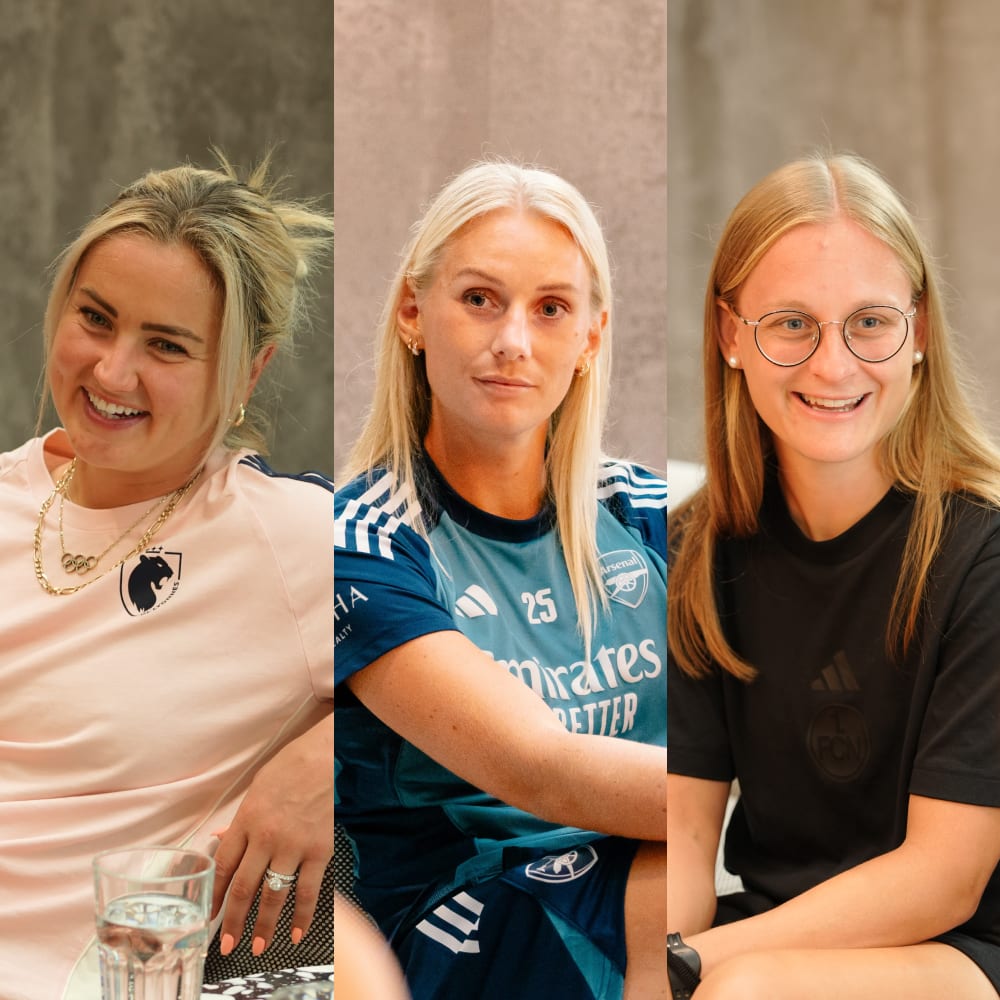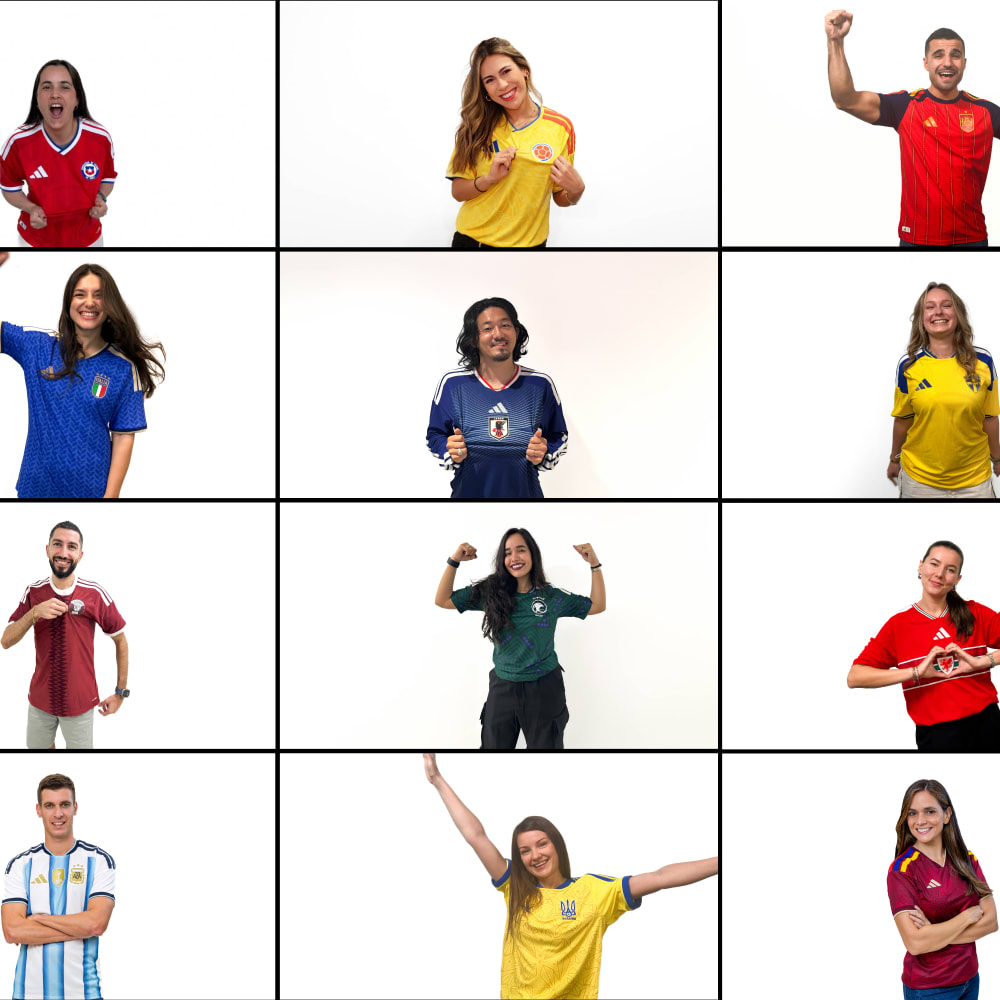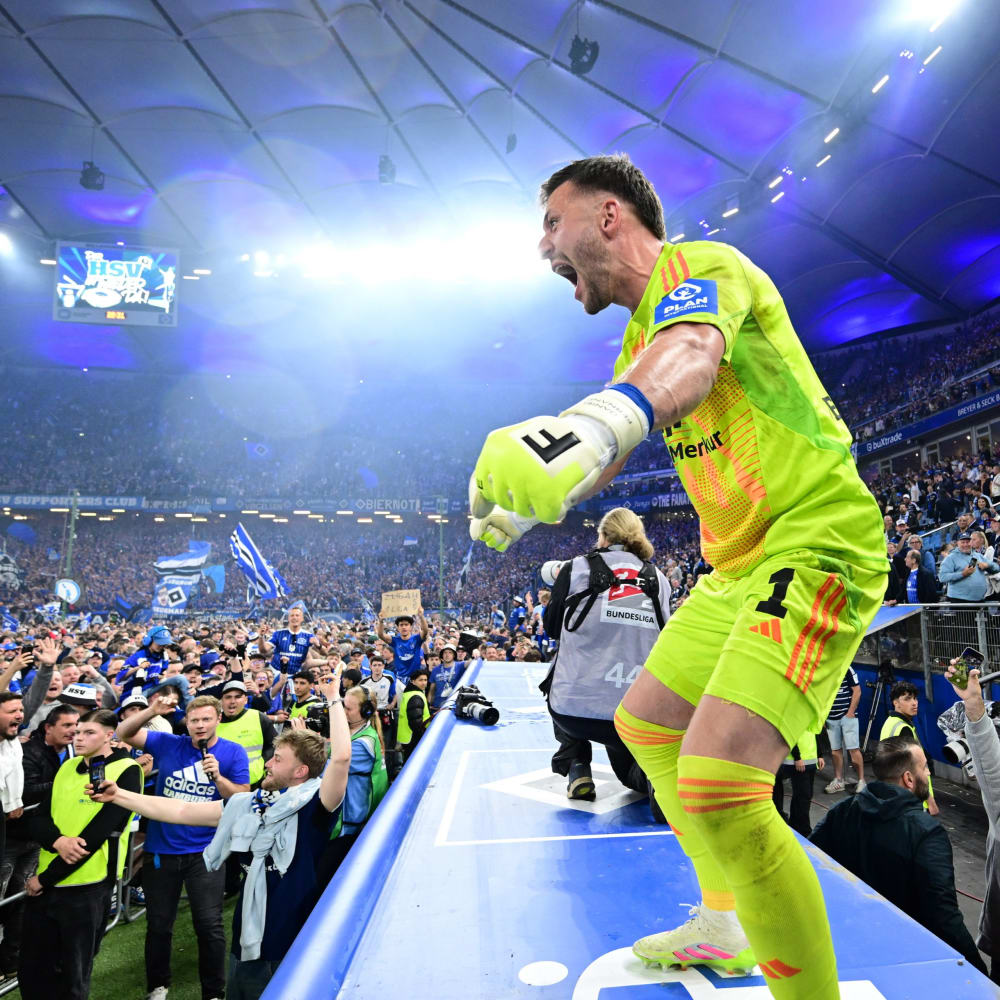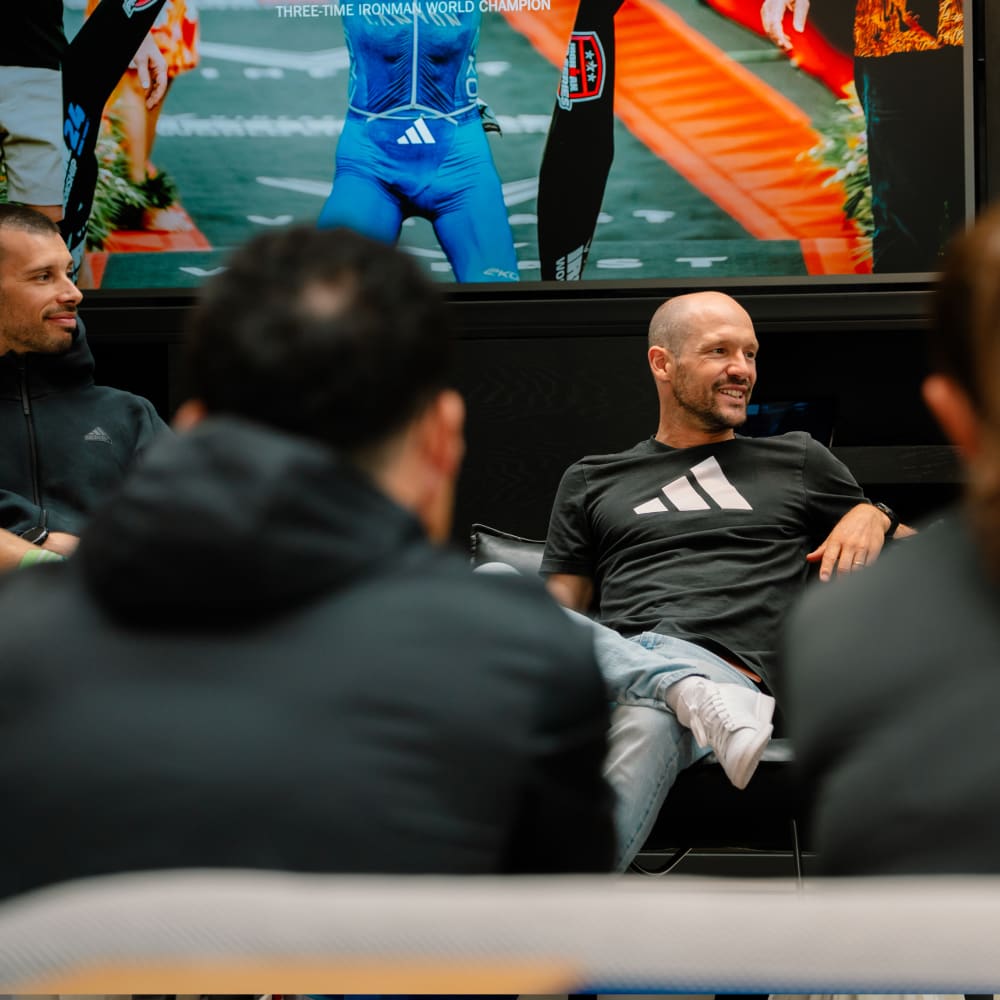
A Triad of Excellence: The Team Behind the UEFA Women’s EURO 2025 Match Ball
When it comes to major tournaments, the spotlight often shines brightest on the players, but the tools of their trade also play a pivotal role. Enter KONEKTIS – the official match ball for the UEFA Women’s EURO 2025™.

Named after the Esperanto word for “connected,” KONEKTIS not only honors the host nation Switzerland, but also brings cutting-edge technology to the pitch with its integrated ‘Connected Ball Technology.’ And it’s this technology that enables refs and football officials to track ball movement in real-time.
But who are the masterminds behind this innovative creation and beautiful ball? In a conversation with Stefan Bichler, Solène Störmann, and Tomek Cegielny, we uncover the incredible effort and collaboration that went into crafting this ball for Europe’s finest.
Let’s meet the masterminds behind the creation of the football.
Q: To kick things off, tell us a bit about your background at adidas and how you became involved in the development of KONEKTIS.
Stefan Bichler, Manager Development in Accessories and Gear: I’ve been with adidas since April 2003, starting in football hardware development. I’ve always been focused on footballs, from their initial concepts to their final designs. For KONEKTIS, we started very early, collaborating with design, marketing, and sourcing teams to ensure the ball met every performance standard in the lab and on the field. We even adapted designs based on feedback from UEFA and other stakeholders.
Solène Störmann, Category Director, Football Footwear and Hardware: My journey with adidas began in apparel before transitioning to hardware nearly three years ago. As the product marketing director for football footwear and hardware, I work closely with the creation triad: design, development, and marketing. For KONEKTIS, we drew inspiration from Switzerland’s interconnected cities, which perfectly aligns with the ball’s “connected” theme. The eight host cities are represented on the ball, celebrating their connectivity and Switzerland’s efficient infrastructure.
Tomek Cegielny, Concepts Manager, Innovation: I’ve been with adidas since 2016, working in the research and development space. My focus is on connected technologies. For KONEKTIS, we in the innovation team received the top-performing ball from Stefan’s team and integrated the Connected Ball Technology, which we’ve been working on for years. We ensured the ball remains indistinguishable from a traditional one in terms of performance while enabling advanced data tracking for officiating and analysis.
The creation triad: a seamless collaboration
Q: Solène, you mentioned a creation triad. How does this collaboration work in practice?
Solène: The triad – product, development, and design – forms the foundation of the ball’s creation. For KONEKTIS, we also worked closely with sports marketing, sourcing, and innovation teams. For example, once Switzerland was announced as the host, we drew inspiration from their iconic Alps and interconnected cities. These elements informed both the ball’s visual design and its name, which reflects connectivity at every level. And based on this info, we kicked off the process in the triad.
Stefan: From a development perspective, our role is to ensure the ball’s performance meets the highest standards, including FIFA Quality Pro certifications. For KONEKTIS, we managed multiple sources to guarantee consistent quality across all materials and constructions. Balancing aesthetics, such as the pearlescent finish and intricate patterns, with performance was a challenge we’re proud to have met. When it comes to the actual creation part of the ball, we often start with a blocking.
Q: Can you tell us about “blocking” and its importance in ball development?
Solène: Blocking refers to the initial designs tested on the ball in grayscale or black-and-white patterns. It’s about ensuring the visual balance and performance of the ball before finalizing the design. For example, we check how the ball’s visual cues help players judge flight behavior, whether it’s curving or moving straight.
Stefan: Exactly. Blocking is crucial for understanding the ball’s rotation and flight. It’s the foundation we build on before applying final graphics. Testing during this stage ensures that the ball’s visual performance complements its physical properties.
Q: What else goes into the ball’s construction?
Solène: The ball is constructed of four main layers: the bladder, the carcass, the foam, and the outer shell. Each layer plays a role in its aerodynamics. For instance, adding grooves and assorting these homogeneously around the ball improves precision and speed. The placement of these grooves, combined with microstructures, impacts the ball’s overall performance. It’s a carefully balanced system where even small details make a big difference.
Behind the technology: What makes KONEKTIS special?
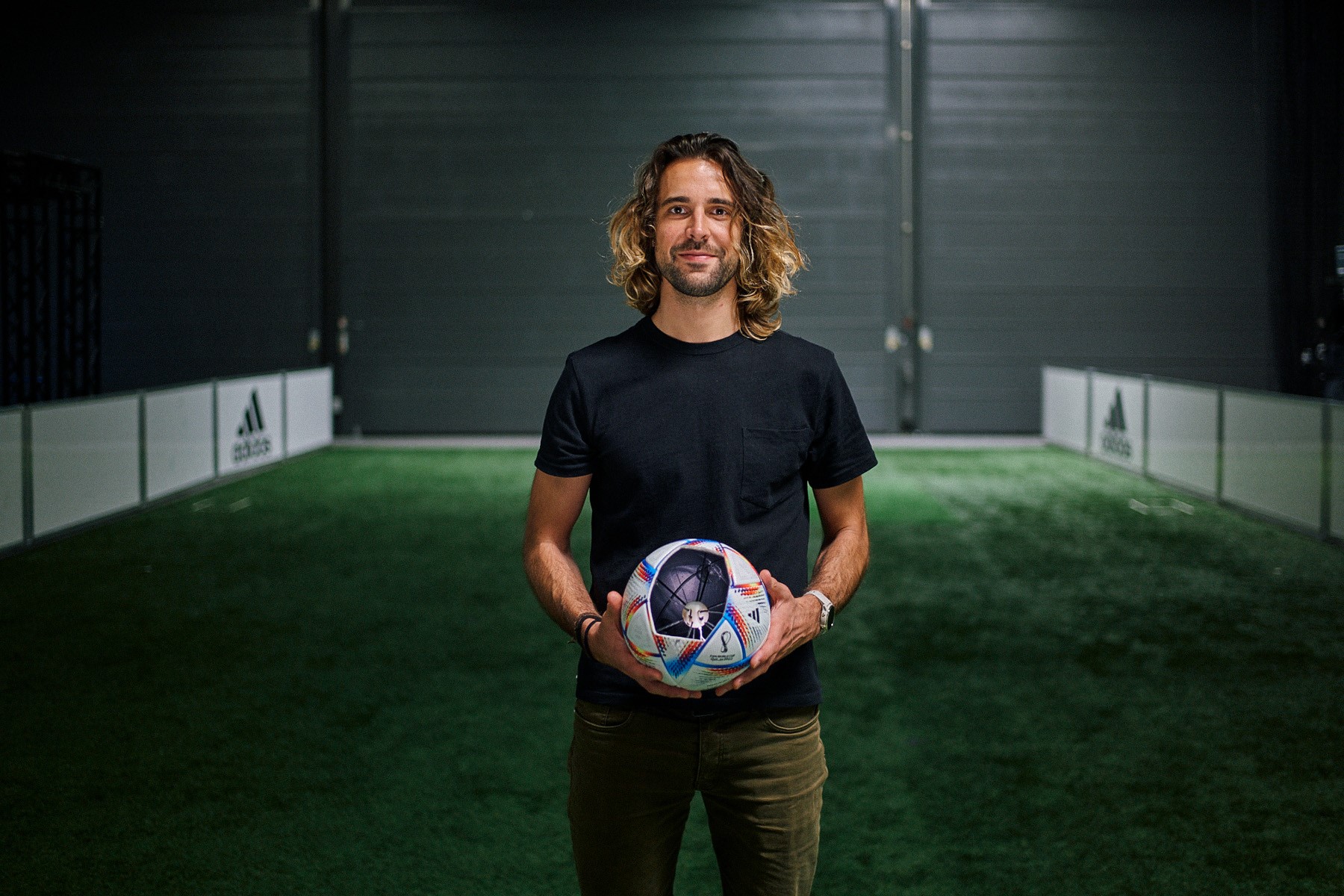
Q: Tomek, we’ve heard so much about the Connected Ball Technology. Can you break down what it adds to the ball?
Tomek: At its core, the Connected Ball Technology includes a 500Hz inertial measurement unit (IMU) sensor stabilized within the ball via an adidas-patented suspension system. This sensor provides real-time data to officials, aiding in faster and more accurate decisions. So, an example of what spectators will also see on the pitch is the ball integrates seamlessly with UEFA’s semi-automated offside technology. Another example is when a hand ball takes place, which wasn’t spotted by the referee; the ball would then generate a 'heartbeat' signal, resembling a hospital heartbeat, which would be displayed on the screens of the video assistant referee (VAR), with a bump in the signal at the exact moment the ball undergoes the slightest touch. Finally, football fans will be able to see the shot speed, distance traveled, and spin for the nicest goals scored—all measured by the ball.
Q: And how was the team able to balance the aesthetics of the football with the advanced technology within the ball itself?
Tomek: When we integrate the sensor, we rigorously test to make sure the electronics don’t disturb the ball’s top-tier quality. Our process includes replicating match conditions to see how the ball behaves under thousands of kicks—some harder than you’d expect in a game. For instance, we use a robo-leg to repeatedly strike the ball in identical ways and track the trajectory to ensure it doesn’t vary. Then there are durability tests, which involve hundreds of high-impact kicks to simulate the wear-and-tear of a tournament. It’s all about maintaining the highest standards while seamlessly embedding the technology. And as a joint-team effort, Stefan and the design team also played an important role in determining and testing how the ball performs under different lighting conditions to ensure it’s media ready.
Stefan: And when it comes to the standards of the ball, there is also the weight tolerance of the ball which is within 15 grams—and that is equivalent to just three sheets of paper. Achieving this precision while integrating technology is no small feat.

Evolution of the ball
Q: Stefan, how has ball technology evolved over the years, especially with Connected Ball Technology?
Stefan: It’s incredible to see how far we’ve come from an innovation standpoint. We tested the initial prototypes back in the early 2000s and have since improved the product to reach perfection. With innovations in materials and balance, even the most discerning professionals can’t tell the difference between a connected and non-connected ball. It’s a testament to how much work has gone into perfecting this technology.
Q: What are some highlights you’ve all experienced working on the ball?
Tomek: As a child, I dreamed of working in football. Seeing that dream come true is surreal. One memorable moment was during testing when we mixed connected and non-connected balls and asked Champions League winning players to identify them. Despite their expertise, they couldn’t tell the difference! It’s funny watching these champions, who are so confident on the pitch, struggle with this challenge.
Stefan: I’ll never forget the first time we achieved perfection with this ball. Seeing it perform flawlessly on the pitch and hearing no complaints from players was incredibly rewarding. Job done for a developer.
Solène: For me, it’s always about seeing how all the pieces come together. Watching a ball you’ve worked on become part of such a prestigious tournament is an emotional experience.
Tomek: I’ll add one more thing, which is watching matches where KONEKTIS is used. It’s a joy to see the ball flying perfectly, regardless of which side scores. We often cheer simply because the ball is doing exactly what it’s supposed to do.
Celebrating a team effort
Q: How many people are involved in a project like this?
Solène: It’s truly a massive effort. From the design team led by Franziska Loeffelmann to the sports marketing team led by Christian Haegele, and brand communications teams led by Joe Carby, everyone plays a part. Even our sourcing partners and factories in Asia are integral to the process. Collaboration across such a diverse, global team is what makes this possible.
Tomek: It’s a big family effort, a collaboration between the engineers and sport scientists of the Innovation department, together with our colleagues from the product triad, sourcing and sports marketing. Seeing it all come together on the biggest stage is immensely satisfying. Everyone, from engineers to marketers, contributes their expertise to deliver a top-quality product.
Q: One last question. Tomek, as someone who has worked so closely on the ball’s technology, are you able to tell the difference between footballs with the Connected Technology and without?
Tomek: We’ve tried to identify it without visual cues, and it’s impossible. If top goalkeepers that play in the World Cups and Euros are not able to figure out which ball is which, then we will never be either—there’s no chance for us.


KONEKTIS is more than a match ball; it’s a testament to the power of collaboration and innovation. From the interconnected design inspired by Switzerland to the groundbreaking technology enhancing officiating, every element reflects the dedication of a diverse, global team. As fans cheer for their favorite teams in the UEFA Women’s EURO 2025™, they’ll also witness the result of years of passion and precision – all encapsulated in this extraordinary ball.





